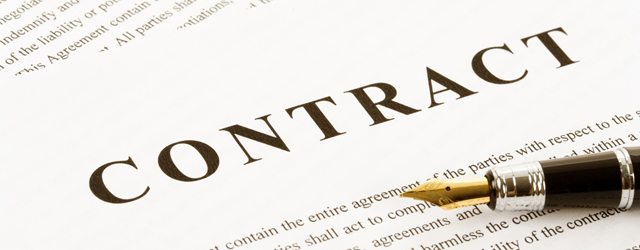Buy Self-help legal documents

Self-help articles - How To ..

This article is focused on New Zealand law and explains issues from a Common law perspective.
How to comply with the New Zealand Dog Control Act
Introduction
The New Zealand law dealing with the care and control of dogs is contained in the DOG CONTROL ACT 1996.
As well as caring properly for their dog, dog owners are responsible for protecting people from their dogs; this is especially so if the dog is known to be aggressive.
Registration of dogs
Every dog owner in New Zealand must register their dog with their local council, if the dog is over three months old. You can be fined up to $3,000 if you do not do this.
You must make sure that the registration label or disc issued by the council is attached to a collar worn on the dog's neck. A Dog Control Officer or Dog Ranger can seize a dog not wearing the label or disk if the dog is found in public or on someone else's property and is not under anyone's control.
You must inform the council within 14 days if you change your address or if the dog gets a new owner. You can be fined up to $500 if you fail to do this.
"Microchipping"
From 1 July 2006, owners of all newly registered dogs are required to have a microchip transponder implanted under the dog's skin. This does not apply to sheep dogs and other dogs used solely or mainly for herding or driving stock.
From the same date, all dogs classified as "menacing" or "dangerous" since 1 December 2003 must also be microchipped.
Owners will have two months to comply. Owners who don't comply can be fined up to $3,000.
Caring for your dog
Dog owners must make sure that their dog receives proper care and attention and is supplied with adequate food, water and shelter. They must also make sure that the dog is adequately exercised. It is an offence not to take proper care of a dog, punishable by a prison term of up to three months or a fine of up to $5,000.
If you believe a dog is not being adequately cared for, you can report the matter to an organisation such as the SPCA or to a Dog Control Officer from your local council.
Control of your dog generally
Owners must keep their dogs under control at all times. If a dog is not under control, a Dog Control Officer or Dog Ranger can seize the dog and either return it to its owner or impound it. The owner can also be fined up to $3,000.
When a dog has been roaming at large, a Dog Control Officer or Dog Ranger can come onto the owner's property (but not into the house) to seize the dog, if the dog is not constrained or under the control of someone 16 or older.
Your responsibilities when your dog is out in public
From 1 December 2003, you must use or carry a leash at all times when you take your dog out in public (unless the dog is a guide dog, a sheep or cattle dog, or other type of working dog).
"Menacing" dogs must be muzzled at all times when out in public, while "dangerous" dogs must be both muzzled and leashed when in public.
Your responsibilities when your dog's on your own property
From 1 June 2004, dog owners must make sure that when their dog is on their property it is under someone's direct control or is confined so that it cannot freely leave the property.
If you fail to comply, a dog control officer or dog ranger can come onto your property (but not into your house) to seize the dog, and you can be fined up to $3,000.
Barking dogs
If someone complains to the council that your dog's barking is causing a nuisance, a Dog Control Officer or Dog Ranger can give you a written notice requiring you to prevent the dog barking, and if necessary to remove the dog from the property. The Dog Control Officer or Ranger has the right to go onto your property (but not into your house) to inspect the conditions under which your dog is kept. You have the right to object to the local council about the notice.
If you don't comply with the notice you commit an offence and can be fined up to $1,500.
If a notice has already been issued and the council receives another complaint, a Dog Control Officer or Dog Ranger can go onto your property and seize your dog.
"Dangerous" dogs
Local councils will classify a dog as "dangerous" if:
- its owner has a conviction for the dog attacking people or animals, or rushing at people, animals or vehicles, and the Court didn't order the dog to be destroyed (for those offences, see below "Dogs causing injury or damage" and "Dogs rushing at people, animals or vehicles"), or
- the council believes the dog is a threat to people, stock, poultry, domestic animals or protected wildlife, on the basis of reasonable grounds and sworn evidence of aggressive behaviour, or
- the owner has admitted the dog is dangerous
If your dog is classified as dangerous, the council must give you written notice of this. You then have the opportunity to object in writing.
The owner has one month after getting the notice of classification to make sure that the dog is kept within a securely fenced part of the owner's property. This fenced area must be one that does not need to be entered in order to get to the house.
The owner must also keep the dog muzzled and leashed whenever out in public, although the dog need only be muzzled and not leashed if it's in a council-designated dog exercise area. (These requirements apply also if the owner knows that the dog is dangerous or that it has attacked people, animals or property, even if the dog hasn't been classified as dangerous.)
The owner of a dog classified as dangerous must also get the dog neutered, and cannot give or sell the dog to anyone else without the council's written consent.
Owners who fail to comply with these requirements relating to dangerous dogs can be fined up to $3,000. The dog must also be destroyed unless the circumstances are exceptional.
If a local council classifies a dog as dangerous, this classification applies throughout New Zealand.
"Menacing" dogs
Dogs that haven't been classified as dangerous may be classified as "menacing" if the council thinks they are a threat to people, stock, poultry, domestic animals or protected wildlife, on the basis of any observed or reported behaviour of the dog or on the basis of any characteristics typically associated with the dog's breed or type.
Dogs must be classified as "menacing" if they belong, wholly or predominantly, to one of the following breeds:
- American Pit Bull Terrier
- Dogo Argentina
- Brazilian Fila
- Japanese Toza.
The council must also classify a dog as "menacing" if its owner has a conviction for the dog attacking or rushing at people or animals, and the Court didn't order the dog to be destroyed (see below "Dogs rushing at people, animals or vehicles"). However, the council doesn't have to do this if the circumstances were exceptional and don't justify the dog being classified as "menacing".
If your dog is classified as "menacing", the council must give you written notice of this. You then have the opportunity to object in writing.
You must keep the dog muzzled whenever it's in a public place or on someone else's property. But it doesn't have to be leashed as well (unlike a "dangerous" dog).
Local councils can also require menacing dogs to be neutered.
Owners who fail to comply with requirements as to menacing dogs can be fined up to $3,000.
If a local council classifies a dog as menacing, this classification applies throughout New Zealand.
Dogs causing injury or damage
The owner of a dog that attacks any person or animal can be fined up to $3,000, whether or not the owner knew that the dog was dangerous. This is in addition to any civil damages the owner may have to pay the person who suffered the injury or damage. If the dog hasn't already been destroyed, the court imposing the fine must order the dog to be destroyed, unless the circumstances were exceptional.
Anyone who sees a dog attacking a person or animal or who is attacked by a dog may immediately seize the dog or destroy it.
If your dog seriously injures someone or kills any protected wildlife, you can be imprisoned for up to three years or fined up to $20,000, or both.
Dogs rushing at people, animals or vehicles
Dog owners commit an offence if their dog is in a public place and
- rushes at or startles any person or animal, and in so doing causes a person to be killed, injured, or endangered or causes property to be damaged or endangered, or
- rushes at a vehicle and causes an accident
The owner can be fined up to $3,000, in addition to paying any civil damages. The court can also order the dog to be destroyed.
The owner may not be liable if they can show that they took reasonable steps to prevent what happened.
Importing of certain dog breeds banned
It is illegal to import any of the following breeds or types of dog (including semen, ova and embryos):
- American Pit Bull Terrier
- Dogo Argentina
- Brazilian Fila
- Japanese Toza
Cautionary notes
- In general, dog owners are responsible for their dog's actions. Take all possible steps to ensure that your dog is under control and will not hurt anyone.
- Whether you are liable for a fine or civil damages may come down to the facts of your particular case. You may need to get legal advice.
- Putting up a sign warning of a dangerous dog does not relieve the owner of legal responsibility if the dog hurts someone. In fact it may make matters worse, as it indicates the owner knew the dog was dangerous.
HowToLaw has partnered with JustAnswer.com
Here you may discuss your legal issue with Lawyer specialising in Family, Employment, Immigration, Property, Business, Consumer Protection, Estate Law and more.












